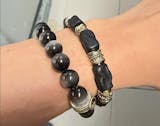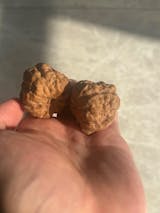Why Longmen Grottoes is a Popular Buddhist Site: History, Meaning and Symbolism
Table of Contents
- Introduction
- The History of Longmen Grottoes: Origins, Dynasties, and Imperial Influence
- Spiritual Significance of Longmen Grottoes: A Sacred Site for Buddhist Pilgrimage
- Symbolism in Longmen Grottoes: Understanding Buddhist Art and the Vairocana Buddha
- Why Visit the Longmen Grottoes Today: Cultural Heritage and Travel Tips
- Final Thoughts
- FAQs
Introduction
Nestled in the cliffs along the Yi River in Henan Province, China, the Longmen Grottoes are one of the finest examples of Chinese Buddhist art. With thousands of caves and over 100,000 Buddha statues carved into limestone, this UNESCO World Heritage site continues to attract scholars, tourists, and spiritual seekers alike. But what makes Longmen so revered? In this blog post, we'll explore the historical roots, spiritual significance, and symbolic depth that make the Longmen Grottoes a living legacy of Buddhist devotion.

The History of Longmen Grottoes: Origins, Dynasties, and Imperial Influence
The origins of the Longmen Grottoes date back to the late Northern Wei Dynasty (around 493 CE), when the imperial court moved its capital to Luoyang and initiated large-scale carving of Buddhist statues into the nearby cliffs. This ambitious endeavor was not only an act of religious devotion but also a demonstration of political power and cultural sophistication.
Over the next four centuries, especially during the Tang Dynasty, the site flourished under royal patronage. Empress Wu Zetian, China's only female emperor and a devout Buddhist, sponsored many of the most iconic carvings. By the time the major work concluded, over 2,300 caves, 2,800 inscriptions, and tens of thousands of sculptures had been created. Each era contributed distinct artistic styles, reflecting evolving religious beliefs and aesthetics.

Spiritual Significance of Longmen Grottoes: A Sacred Site for Buddhist Pilgrimage
The Longmen Grottoes were more than an imperial project; they were part of a sacred landscape designed to facilitate spiritual connection. For centuries, Buddhist pilgrims visited the site to pay homage, meditate, and earn merit.
Carving images of the Buddha was believed to generate spiritual blessings not just for the carver, but for the community and future generations. The Grottoes were also strategically placed along important pilgrimage and trade routes, further enhancing their status as a sacred destination.
Each sculpture, from the serene face of the seated Buddha to the vigilant expressions of guardian figures, was intended to embody core Buddhist principles like compassion, wisdom, and detachment from worldly suffering. The very act of walking among these statues offers a contemplative experience, linking the devotee to centuries of spiritual tradition.

Symbolism in Longmen Grottoes: Understanding Buddhist Art and the Vairocana Buddha
What sets the Longmen Grottoes apart is not just the scale, but the intricate symbolism carved into each figure. The central figure in the Fengxian Temple, Vairocana Buddha, represents the cosmic Buddha who is the embodiment of ultimate truth. He is also the central figure among the Five Dhyani Buddhas, representing the source of all enlightenment; the other four are Akshobhya, Ratnasambhava, Amitabha, and Amoghasiddhi. His towering presence and subtle smile convey both majesty and inner peace.
The Vairocana Buddha Statue stands at a total height of 17.14 meters, with the head measuring 4 meters and the ears 1.9 meters long. The Buddha’s hair is styled in wave-like curls, and the face is full and rounded, with crescent-shaped eyebrows and a compassionate gaze. Unlike the five grand Buddha statues carved since the Northern Wei dynasty—which often reflect the solemn and majestic bearing of imperial figures—the Vairocana Buddha exudes a gentle, feminine grace.
The proportions of the statue differ from typical sculptures. The head and upper body are significantly larger in proportion to the lower body. This intentional distortion ensures that viewers looking up from below experience a more natural and harmonious visual perspective. Additionally, Vairocana Buddha slightly lowers the head, allowing the gaze to align directly with the worshippers, creating a sense of intimate connection.
As Li Zehou observed in his classic aesthetic work The Path of Beauty:
"The group of statues at Fengxian Temple in Longmen, especially the main Vairocana Buddha—with its towering presence over ten meters high and its touchingly serene and beautiful expression—is the highest achievement of ancient Chinese sculpture."

Why Visit the Longmen Grottoes Today: Cultural Heritage and Travel Tips
Recognized as a UNESCO World Heritage Site in 2000, the Longmen Grottoes are more than just a relic of the past — they are a living testament to China's spiritual and artistic heritage. Today, this awe-inspiring site draws visitors from around the world who seek to experience its timeless beauty and profound cultural significance.
From a traveler’s perspective, the Grottoes offer something for everyone:
- 🧠 Art lovers can marvel at the intricate carvings that span over 1,500 years of Buddhist sculpture, including the majestic Vairocana Buddha.
- 🧱 Architecture enthusiasts will appreciate the engineering mastery behind thousands of caves carved into steep limestone cliffs.
- 🧘♂️ Spiritual seekers often find peace walking among the serene stone Buddhas, experiencing a deep sense of reflection and connection.
🧭 Travel Tips for Visiting Longmen Grottoes
- 📍 Location: The site is located about 12 km south of Luoyang, Henan Province. It’s easily accessible by bus, taxi, or high-speed rail to Luoyang Longmen Station.
- 🕰️ Best Time to Visit: Spring (April–May) and autumn (September–October) offer pleasant weather and fewer crowds. Early morning is ideal for quiet reflection and photography.
- 🎫 Tickets & Hours: The entrance fee is around ¥90 CNY. The site usually opens from 8:00 AM to 6:00 PM (check seasonal hours in advance).
- 🥾 What to Wear: Comfortable walking shoes are a must. There are steep paths and many steps as you explore the cliffside carvings.
- 📸 Photography Tips: Please do not use flash when photographing the Buddha statues. Drones are not allowed unless you have special permission.
- 🍱 Nearby Attractions: Combine your visit with the White Horse Temple (China’s first Buddhist temple) or Luoyang Museum to complete your cultural journey.
In an age of rapid change, the Longmen Grottoes offer something deeply grounding — a moment to slow down, look closely, and appreciate what human hands can create when guided by faith, vision, and devotion.

Final Thoughts
The Longmen Grottoes aren’t just old stone carvings—they’re quiet storytellers. Every statue, every cave holds centuries of faith, beauty, and human touch.
Whether you’re into art, history, or just looking for a place that feels timeless, Longmen has a way of speaking to you—softly, but deeply.
It’s not just a relic of the past. It’s a space where history still breathes, and meaning still shines through stone.
FAQs
-
What are the Three Great Treasures of Buddhist Art in China?
The Longmen Grottoes, Dunhuang’s Mogao Caves, and Datong’s Yungang Grottoes are considered the three most significant repositories of ancient Chinese Buddhist art. -
Does the Longmen Grottoes night light show damage the relics?
No. The show uses cold light source technology that meets cultural preservation standards and does not harm the stone carvings. -
Why is flash photography prohibited at Longmen?
Strong light can accelerate pigment oxidation, which may damage ancient carvings and original paint layers. -
Why is the Vairocana Buddha’s hand in a U.S. museum?
In 1934, one of the hands was stolen and eventually ended up in the Metropolitan Museum of Art in New York. -
Can I access all caves during a visit?
Not all caves are open to the public at all times. Some areas are closed for preservation or safety reasons, while others may require special access. -
What’s the best time of year to visit Longmen Grottoes?
Spring (April–May) and autumn (September–October) offer the best weather and lighting for viewing and photography. -
Are there any guided tours available in English?
Yes, English-language tours are available onsite and through select travel agencies. Audio guides are also offered at the entrance. -
Can I take part in any spiritual or cultural activities at the site?
While it’s not a functioning temple complex, visitors often meditate, offer incense at nearby temples, or join seasonal Buddhist ceremonies held in the region.

























































